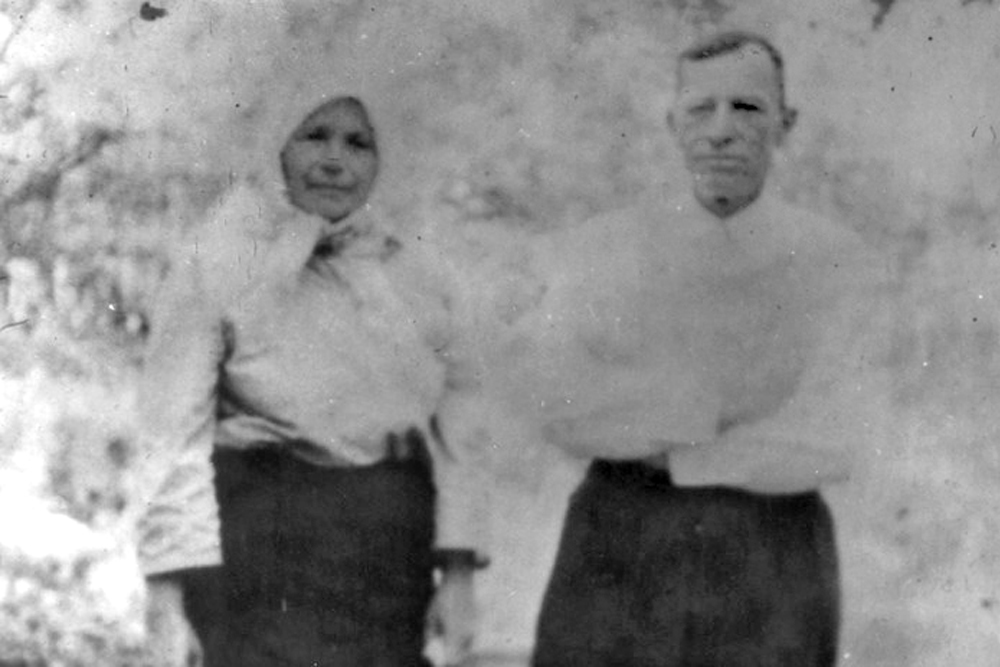Bank of Portraits / Mykhalchuk Yakiv, Fedora, Nadiia and Mariia, Lysiuk Dmytro and Paraska, Dykun (Lysiuk) Olena

Mykhalchuk Yakiv, Fedora, Nadiia and Mariia, Lysiuk Dmytro and Paraska, Dykun (Lysiuk) Olena
Yakiv Mykhalchuk lived in the village with his wife Fedora, daughters Nadiia and Mariia in Rudnia-Novenka in Khmelnytskyi region.
In October 1942, there was a knock on the door of the Mykhalchuk's house. It was three Jewish women: Valentyna Neiman with her three-year-old daughter Henia and her sister Fira Nyznyk. The Mykhalchuk family recognized them as residents of the neighboring village of Savych. The women shared their difficulties over the past 16 months of occupation and talked about the losses they had suffered in their families.
born in 1939, and later, a little brother named Mykhailo was born. The Neiman family lived in Valentyna's grandfather's house in the village of Savych near Shepetivka. At the beginning of the German occupation, a punitive detachment arrived in the village, conducting searches in every house. Valentyna's grandfather, father, and uncle were immediately shot. Valentyna, along with her children and two sisters, was driven to the neighboring village of Sudylkiv, where all the Jews from the surrounding villages were being sent. A few weeks later, the first mass shooting took place, during which Valentyna's younger sister, Mania, was executed. In December 1941, the remaining Jews were transferred to the Shepetivka ghetto, where little Mykhailo was killed. Before the next shooting, Valentyna, Henia and Fira managed to escape from the ghetto and hide in the forest.
The Mykhalchuk family allowed the women with the child into their home. Yakov arranged a hiding place in the storage room under the floor, although it only allowed for lying down. Once a day, mainly at night, the women would emerge for fresh air. Later on, taking care of three individuals became overwhelming for the Ukrainian family, as they also had their married daughter, Nadiia, living with them, who had just given birth to a baby girl. Then Yakov asked for help from his friend Dmytro Lysiuk, who lived nearby.
In late 1942, the Jewish women moved to the Lysiuk family for several months. Dmytro and Paraska had five daughters. The eldest, 18-year-old Olena, along with her parents, took care of the sheltered individuals and made sure that strangers in hiding did not notice the little sisters.
Later, the Jewish women returned to Yakov and Fedora's estate, where they stayed until the end of the German occupation. In March 1944, Soviet soldiers entered the village and set up their headquarters in the Mykhalchuks' house. Fedora told one of the commanders, who appeared to her as Jewish, about the three fugitives they were sheltering. He ordered them to be transported to the rear since Henia was suffering from pneumonia.
After the war, the rescued individuals reestablished contact with their saviors.
In 1996, Yad Vashem recognized Yakov and Fedora Mykhalchuk, their daughters Mariia and Nadiia, as well as Dmytro and Paraska Lysiuk, as Righteous Among the Nations. In 2000, this honorary title was also bestowed upon Olena Dykun (Lysiuk).
Svitlana Demchenko
Kyiv
National museum of the History of Ukraine in the Second World War
-
fingerprintArtefacts
-
theatersVideo
-
subjectLibrary

